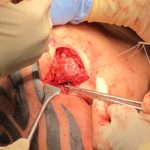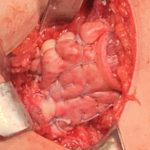Overview
What is a pec tear?
The pectoralis major muscle originates from multiple locations, including the costal cartilage of ribs two through six, the sternum, the medial half of the clavicle. The pectoralis major muscle divides into two muscular heads: the sternal and clavicular heads. These two muscular heads converge into a singular attachment at the humerus.
The pectoralis major muscle is responsible for adduction, internal rotation and forward flexion of the shoulder. All body builders know the bench press and flies stress the pectoralis major. With extreme force, such as bench press with heavy weight and eccentric load, the force on the pectoralis exceeds its strength and tears.
Why do body builders get pec tears?
Pectorais tears are seed exclusively seen in males and most often occurs in weightlifters. excessive tension on a maximally eccentrically contracted muscle may be an iatrogenic injury caused during open rotator cuff repair. The training of body building puts maximally stress on the pectoralis.
What are the symptoms of pec tears?
Patients experience a sharp tearing sensationwith resisted adduction and internal rotation such as with a bench press. The shoulder becomes immediately weak. Swelling develops quickly and within a few days, bruising develops on the chest and the upper arm.
How does Dr. Ahmad and his team diagnose pec tears?
Ahmad starts with performing a careful physical examination. He assesses swelling and ecchymosis. He then palpates the pectorails to determine if there is tenderness and if a defect can be appreciated. He has the patient put their hand together in front of their chest and then push together. This activates the pectoralis and often the will make a visiable deformity with the pectoralis muscle moves towards the sternum.(Figure ) The arm pit also loses its normal contour.
MRI
Ahmad obtains an MRI useful in identifying the site and extent of the rupture to may show avulsion of the pectoralis major tendon from the humerus. . Occasoinaly, an ultrasound is used to further determine if the tear is partial and exact location. The location can be directly torn from the humerus bone, at the junction of the muscle and tendon, or in the muscle itself.
Evaluation by Team Ahmad
How does Dr. Ahmad treat pec tears?
High grade pectoralis major muscle if not repaired will cause weakness and deformity to the shoulder. Most active individuals with high grade tears and especially body builders or power lifers, elect operative treatment for best outcome.
Treatment Options
Surgical technique
- Ahmad makes a small incision adjacent to the arm pit. slightly medial to the axillary crease, beginning 3 cm distal from the coracoid process. The retracted pectoralis major muscle is then dissected and scar tissue removed. The tendon and muscle are then mobilizied for an anatomic reapproximation of the muscle.
- The tendon insertion site on the humeral shaft is then identified. The long head of the biceps muscle must be identified and protected because it is in close proximity to the insertion site of the pectoralis major muscle (Figure #). A bleeding surface is created at the bone insertion to maximize healing. Three to four small holes are are created at the tendon insertion site.
- Extremely high strength suture is then suture through the pectoralis tendon in a fashion to achieve the greatest strength. The suture tapes are then placed through cortical metal buttons. The buttons are deployed into the the small holes at the attachment site. The suture is then tensioned delivering the pectarlis onto the attachment site. The high friction suture or suture tapes are tied fixing the tendon anatomically. This technique is the highest strength surgical technique available.
- Some situations including chronic tears that were left unrepaired or surgically repaired pec tendons that fail benefit from augmentation to the repair. Using allograft tissue to augment the repair can increase surgical success.


























